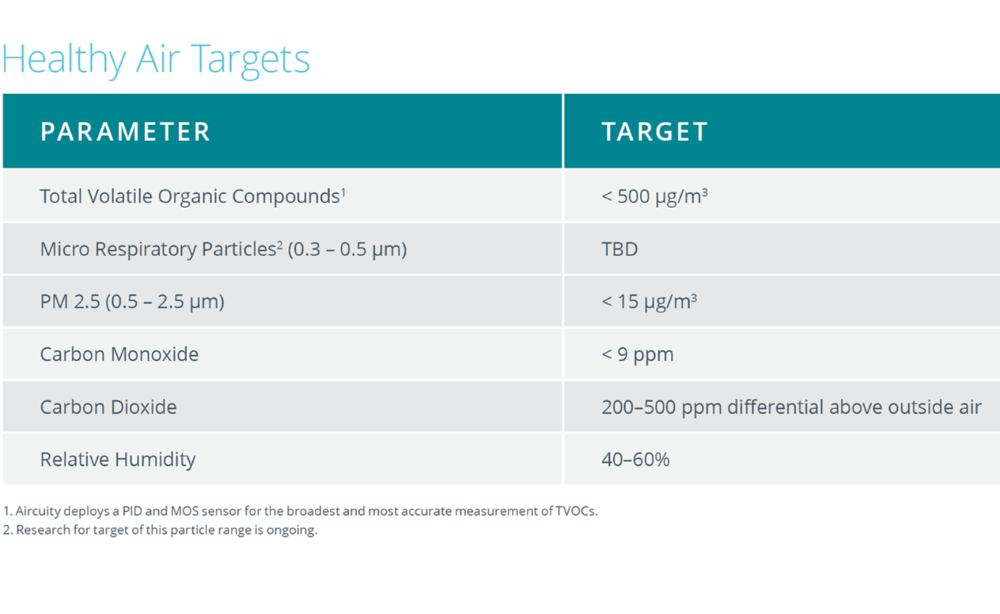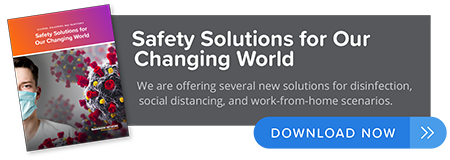As COVID-19 vaccines are being distributed throughout the world, there is guarded optimism that there is light at the end of the tunnel for the viability of face-to-face meetings. Many meeting planners are anticipating taking the first steps to plan in-person meetings and events in the second half of 2021. But while many are optimistic, the end user of meetings and events, attendees, may still be skeptical that they are meeting in a safe environment. Recent CDC statements have lessened the concern about surfaces being major transmitters of the virus, but transmission via air is still considered the most likely conduit to spread COVID-19. And even if the illusive concept of “herd immunity” is achieved and business begins to return to normal, indoor air quality (IAQ), along with cleaning standards such as the GBAC STAR accreditation, will still be a top concern in facilities ranging from small boardrooms to massive convention centers, especially during cold and flu season.
“The indoor air quality of a facility can either be a conduit to the spread of viral illnesses or it can be one of the most critical pieces we have in preventing them,” said Dan Diehl, CEO and president of Aircuity, a company that specializes in creating healthy indoor environments through its ventilation systems. “Not only that, recent studies such as COGfx have proven that IAQ can directly impact the ability to think critically—something which is key during conferences.” (Pictured: Dan Diehl)
Aircuity systems are currently installed in major meetings and events facilities such as Mohegan Sun Casino, Prudential Arena (home of the New Jersey Devils NHL team) and Resorts World Las Vegas, which at publication time was scheduled to open in summer 2021.
What Planners Should Know About IAQ
In order to help ensure the safety of attendees and quell any concerns they have attending an in-person event, meeting and event planners need to understand some basic information about the importance of indoor air quality and the systems that facilities offer to provide healthy ventilation.
“One of the ways that coronavirus and other viruses can be spread in poorly ventilated indoor spaces is through attachment to airborne particulates, so it is a priority to limit these as much as possible,” Diehl said. “Even if a building has recently upgraded its filters, administrators need to be able to quantify the impact. For example, a MERV 13 filter is only 40% efficient with a 0.3 μm particle, whereas the same filter is 100% efficient with a 2.5 μm micron particle. Using the right data, buildings can determine the ‘effective filtration rate’ and whether small particle levels are being mitigated.”
Diehl provided this chart to demonstrate the effectiveness of filter grades at mitigating specific sizes of airborne particles.
A key to mitigating airborne particles is to verify that enough dilutive air is being brought into the facility, which can be accomplished by having a reliable system to measure the amount of carbon dioxide in the space so additional air can be brought in where and when needed.
Healthy building certifications to consider when planning include the following:
- The International Well Building Institute’s WELL Building Standard
- RESET
- Fitwell
Planners can ask facilities the following questions:
- Is the facility measuring and managing IAQ?
- If yes, what are the measurements for particles, CO2, RH and TVOCs? The meeting planner can then reference this chart for healthy indoor air targets to see if it's in a safe range.
- Has the meeting location achieved any of the healthy building certifications, such as IWBI’s WELL Building Standard, RESET and Fitwell?
CDC Recommendations for Ventilation in Buildings
Staying informed on IAQ is more important than ever, as the CDC emphasized in early April that while it is possible to become infected with COVID-19 through contact with surfaces, the risk is considered low. Primary transmission is via respiratory droplets carrying the virus, which can remain in the air for hours.
For this reason, ventilation and air filtration remain more important than ever in indoor settings, especially facilities hosting groups of people for meetings and conventions.
This spring, to better understand how to improve ventilation indoors to reduce the risk of COVID-19 transmission, the CDC revised its guidelines for ventilation in buildings. Planners can read these guidelines and check with venues to ensure they are following updated best practices. Some of these include:
- Increase the introduction of outdoor air by opening windows and doors, when weather allows, and open outdoor air dampers beyond minimum settings to reduce or eliminate HVAC air recirculation.
- Use fans to increase the effectiveness of open windows, like using a window fan, placed safely and securely in a window, to exhaust room air to the outdoors. For larger venues, ask about gable fans or roof ventilators.
- Improve central air filtration by making sure air filters are properly sized and within recommended service life,
- Consider HEPA filters and portable HEPA air cleaners. Ask if the venue has invested in these high-efficiency particulate air (HEPA) fan/filtration systems to enhance air cleaning.
- Consider running the HVAC system at maximum outside airflow for two hours before and after the building is occupied in non-residential settings.
For the full list of up-to-date guidelines and considerations, visit the CDC’s website.
In addition to ventilation improvements, the CDC recommends a “layered approach” to reduce the spread of COVID-19 and limit exposure, which includes familiar guidelines of physical distancing, wearing face masks, hand hygiene and vaccination.
Critical IAQ Parameters to Know
To further understand IAQ, according to Diehl, there are four key IAQ parameters to track when seeking to mitigate virus transmission:
- Total Volatile Organic Compounds
- Relative Humidity
- Airborne Particulates
- Carbon Dioxide
Each of the indicators must be continually measured and managed. Diehl’s comments on each parameter are included below:
1. Total Volatile Organic Compounds (TVOCs)
Implementation of sanitization and other enhanced cleaning protocols are a must to facilitate a safe return indoors. But be warned: Increased cleaning also means increased use of chemicals that often dramatically increase the amount of TVOCs in the air. Facility operators should review TVOC data to ensure that it’s in an acceptable range. A sensor system is the right tool for this; especially one that identifies any increase of TVOCs from cleaning and sends a signal to add more outside air until TVOC levels drop again.
2. Relative Humidity (RH)
When RH is lowered to the 0%-40% range, respiratory immune defenses are impaired. At these RH levels, airborne droplets containing viruses evaporate and lighten, allowing the droplets to float longer and survive for a longer period of time. Due to these issues, facilities should work to provide higher relative humidity levels, ideally in the range of 40%-60% RH, especially in low humidity/peak viral season.
3. Airborne Particulates
COVID-19, like other viruses, spreads by attaching itself to particles. In the indoor environment, this is especially dangerous and must be minimized. It’s not enough that a building has recently upgraded its filters; the ability to quantify the impact is also imperative. Filter efficiency is generally lowest between 0.1-0.5 mm, which is the most dangerous for coronavirus transmission. Therefore, both small particles and those between 0.5-2.5 should be measured. Using the right data, facility operators can determine the “effective filtration rate” and whether the healthy small particle levels are being controlled.
4. Carbon Dioxide (CO2)
Facilities should verify they are bringing in enough dilution air and that the building has a reliable system to sense the amount of CO2 in the space and bring in more when needed. The building should also use a high-quality analytics platform to look at CO2 levels of the outside air, supply air and room air. By comparing these readings to science-based air quality standards, facility operators and planners will know if the building has adequate ventilation to control CO2 levels.

Key parameters for ensuring healthy air quality. Credit: Aircuity
IAQ’s Impact Beyond Virus Mitigation
Diehl said that Aircuity has seen an acceleration in the number of facilities that are interested in IAQ systems since the pandemic begin, which was a continuation of an existing trend from before COVID-19. Besides combatting the spread of less-lethal viruses such as seasonal flus, studies point to good air quality providing a number of additional benefits.
The COGfx study, conducted by the Harvard T.H. Chan School of Public Health’s Center for Health and the Global Environment, SUNY Upstate Medical University and Syracuse University, for example, demonstrated that indoor air quality in green building environments more than doubled the cognitive function scores of 109 test subjects.
A Tool to Measure IAQ
To help facilities analyze IAQ, Aircuity offers an analytics dashboard app that meeting and event planners convening in buildings with Aircuity systems could ask to see.
“Aircuity’s data platform is available to all customers,” Diehl said. “The building manager would certainly be able to share this with customers holding meetings at the facility if they choose to.”
Tyler Davidson has covered the travel trade for nearly 30 years. In his current role with Meetings Today, Tyler leads the editorial team on its mission to provide the best meetings content in the industry.






